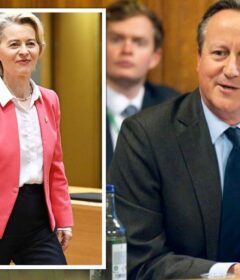Thomas Coughlan: Two political fault lines open for 2022
OPINION:
If you still believe forecasts, it’s difficult to feel too grumpy about Treasury’s HYEFU numbers published on Wednesday.
They paint a picture of a fiscal and economic Neverland, where unemployment is nudging 3 per cent, rather than 4, wages grow faster than inflation, and the economy bounces back with rapid 4.9 per cent growth in 2023, and slightly more staid 2.2-2.3 per cent growth in the years thereafter.
The numbers pave over a political fracture that’s played out over the entire four years of this government: the growth in public spending and debt.
Labour and the Greens came into office promising to get net core Crown debt below 20 per cent of GDP by shortly after the end of their first term – barring an economic shock.
This target bitterly disappointed the left, hungry for more spending, but failed to neuter cries from the right that the new Government wasn’t taking debt reduction seriously enough (National had promised to get debt to 10-15 per cent of GDP).
They almost achieved this goal before the pandemic blew a hole in the public finances; the Government’s costly health programmes and economic stimulus, combined with sluggish economic growth were, even after the economic situation improved, expected to see net debt rise to 48 per cent of GDP, before decreasing.
It’s now expected to peak at 40.1 per cent of GDP, and fall to just 30.2 per cent of GDP by 2026.
That’s a fairly dramatic change. At the election, National mulled to get the net debt number to 30 per cent by the end of the decade – however, upon realising just how much spending would need to be cut to get there, softened the plan to the rather more modest target of getting net core Crown debt to 36 per cent of GDP by 2033/34.
Now, the better figures have a lot to do with the economy roaring back into life much faster than expected – National, had they won the election, would have benefitted from that too – but Labour certainly scores political points by hitting National’s election promise nearly a decade before National could.
But as one political fault line goes dormant, two more open up.
Less than an hour after Treasury’s forecasts were tabled, National leader Chris Luxon and finance spokesman Simon Bridges were grilling Labour on the worst number in the forecasts: the fact that CPI inflation will hit a rather spooky 5.1 per cent next year.
It’s a good issue for National; if inflation is higher than wage growth (as it will be next year) people will be poorer. Luxon and Bridges (aided by David Seymour) used questions to ask whether the Government thought higher levels of government spending were creating inflation.
The Government pushes back on that attack, arguing spending has been necessary to get through the pandemic, and that health and education spending are necessary to fix public services. Inflation is high all over the world, surging energy costs and capacity constraints are being felt everywhere – not just in New Zealand.
For its part, Treasury (and the Reserve Bank for that matter) thinks it’s a bit of both, noting both domestic and international factors contributing to the inflation we’re seeing. So long as domestic demand has any effect on inflation, it’ll be a good issue for National.
Inflation isn’t going anywhere next year, so expect to see cost of living bed in as the main left-right political faultline next year.
The other political front is to the Government’s left.
While Robertson might be glad to see the debt level trend down (I’d put money on him announcing a numeric target at the Budget next year), Labour MPs to his left, to say nothing of the Green Party, might wish him to use some of the fiscal headroom for social and climate spending.
Robertson has moved to neutralise this threat with an enormous operating allowance of $6b in the next Budget, more than twice what he promised to spend at the election (to say nothing of the $4.5b climate fund).A $6b allowance would have been unthinkable almost a year ago – when the debate was between Natioal’s pledge of around $2b a year, and Laobur’s of $2.7. This allowance is very red indeed.
The big decision for the left is whether Robertson continues to tilt the fiscals leftwards, by spending more, making friends to his left (and perhaps shoring up support for a future tilt at the Labour leadership).
Certainly, since Luxon assumed the National leadership – an event which could have triggered a pivot by Labour to the centre – the party has leaned to the left.
It’s not just Robertson – facing pressure from Business NZ, Workplace Relations Minister Michael Wood mounted a vociferous defence of unionism in the House last week, something one might not have expected from the more leftly timid Labour of last term.
The big question for Labour and for Robertson is whether he can have it both ways, beating National on inflation and keeping the left in check on spending.
The answer to that question will have a lot to do with the continued strength of the economy. While this week’s numbers are promising on that front, with Omicron on the horizon, the smart money would put as much faith in these numbers as any of the Covid forecasts that have preceded them.
Source: Read Full Article
/cloudfront-ap-southeast-2.images.arcpublishing.com/nzme/IRE5VKVVA75NS7NIL5IONRD5EM.jpg)


